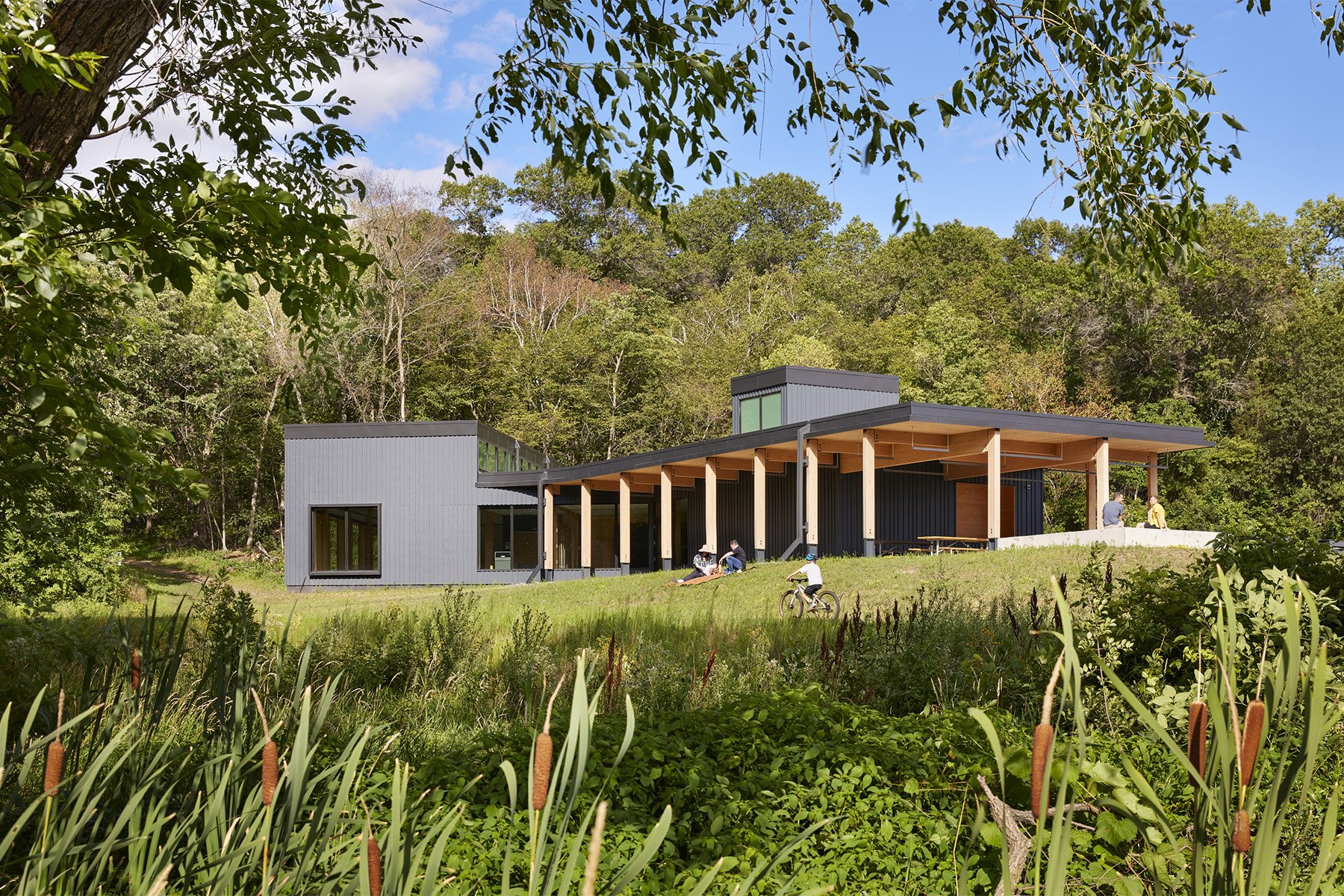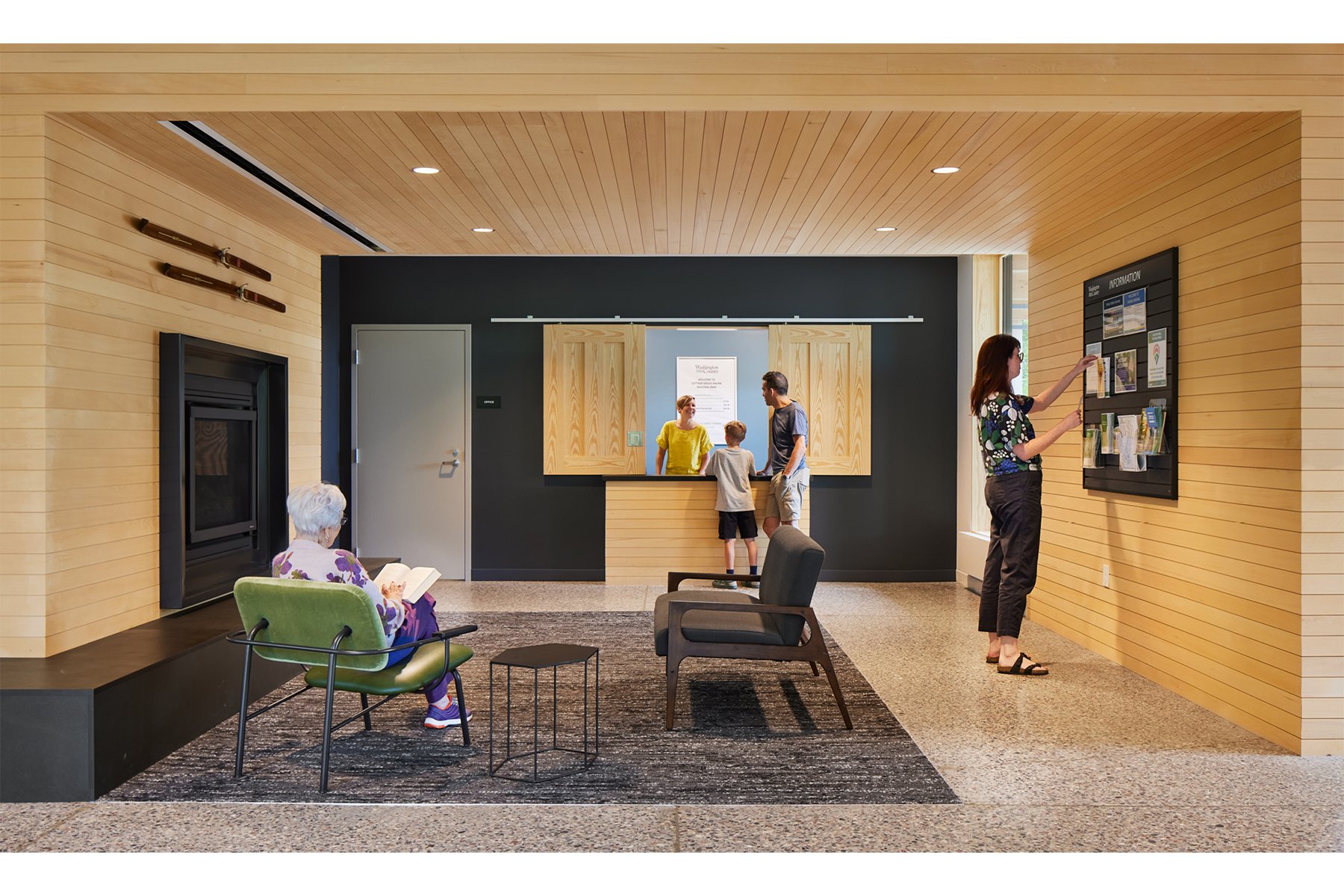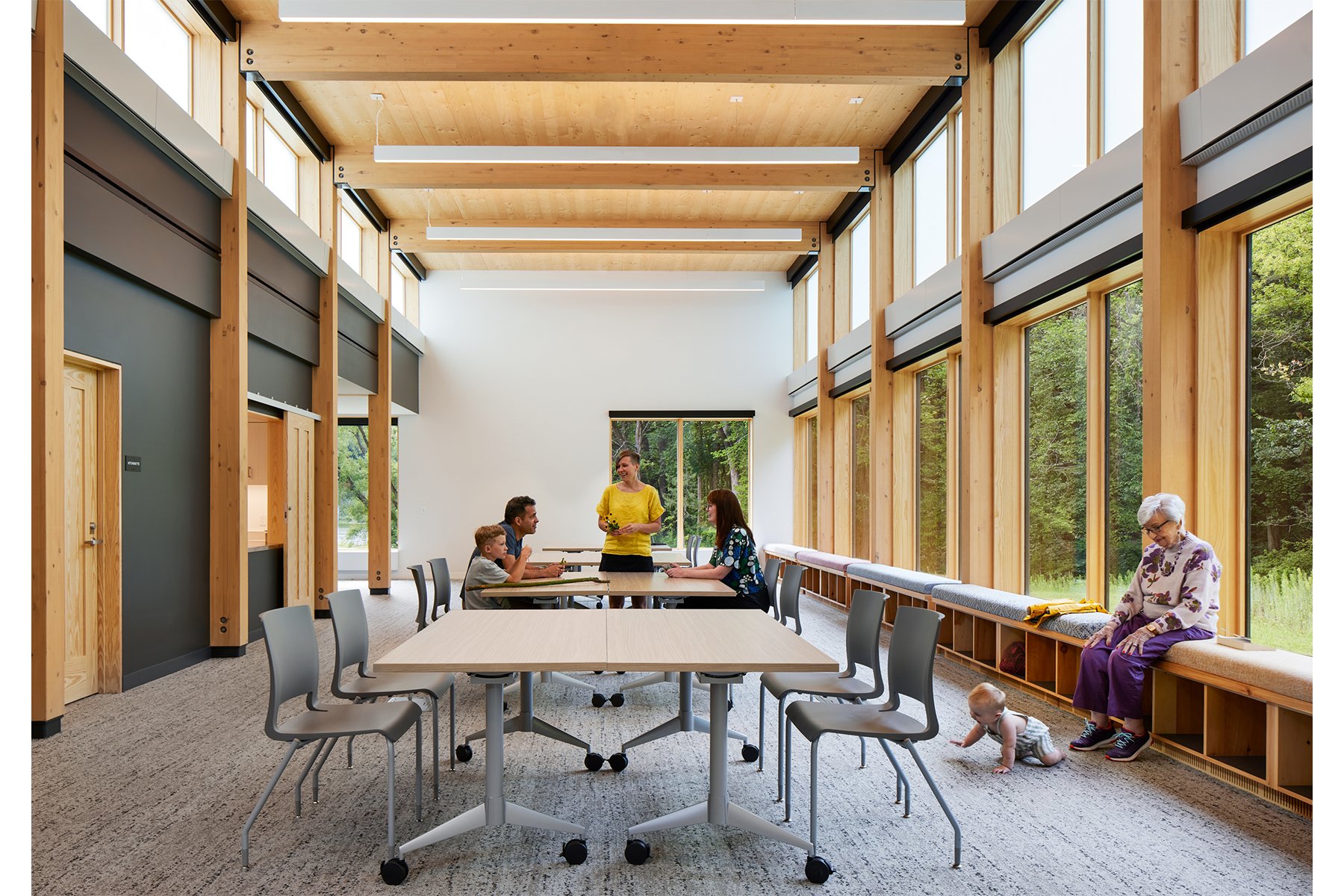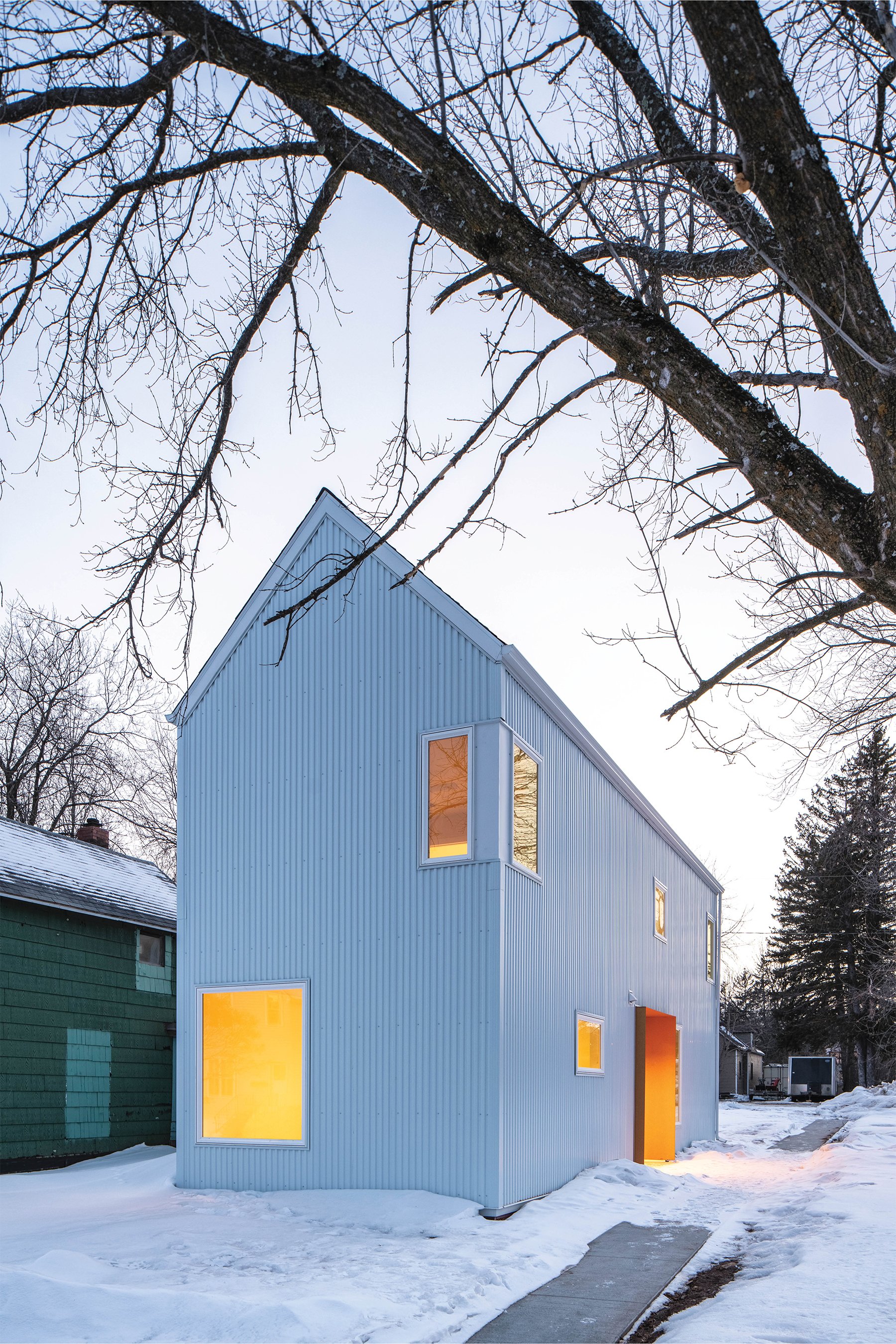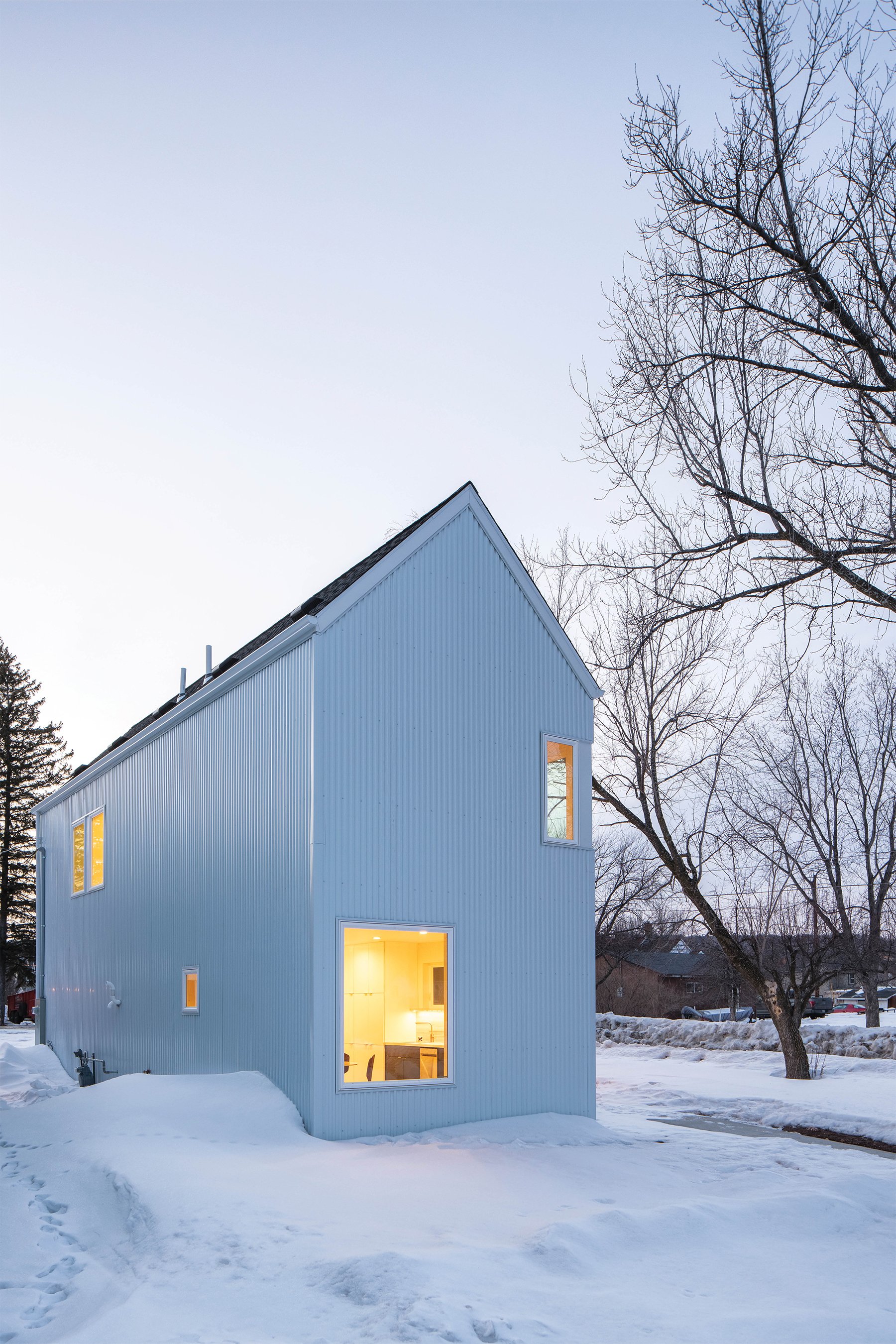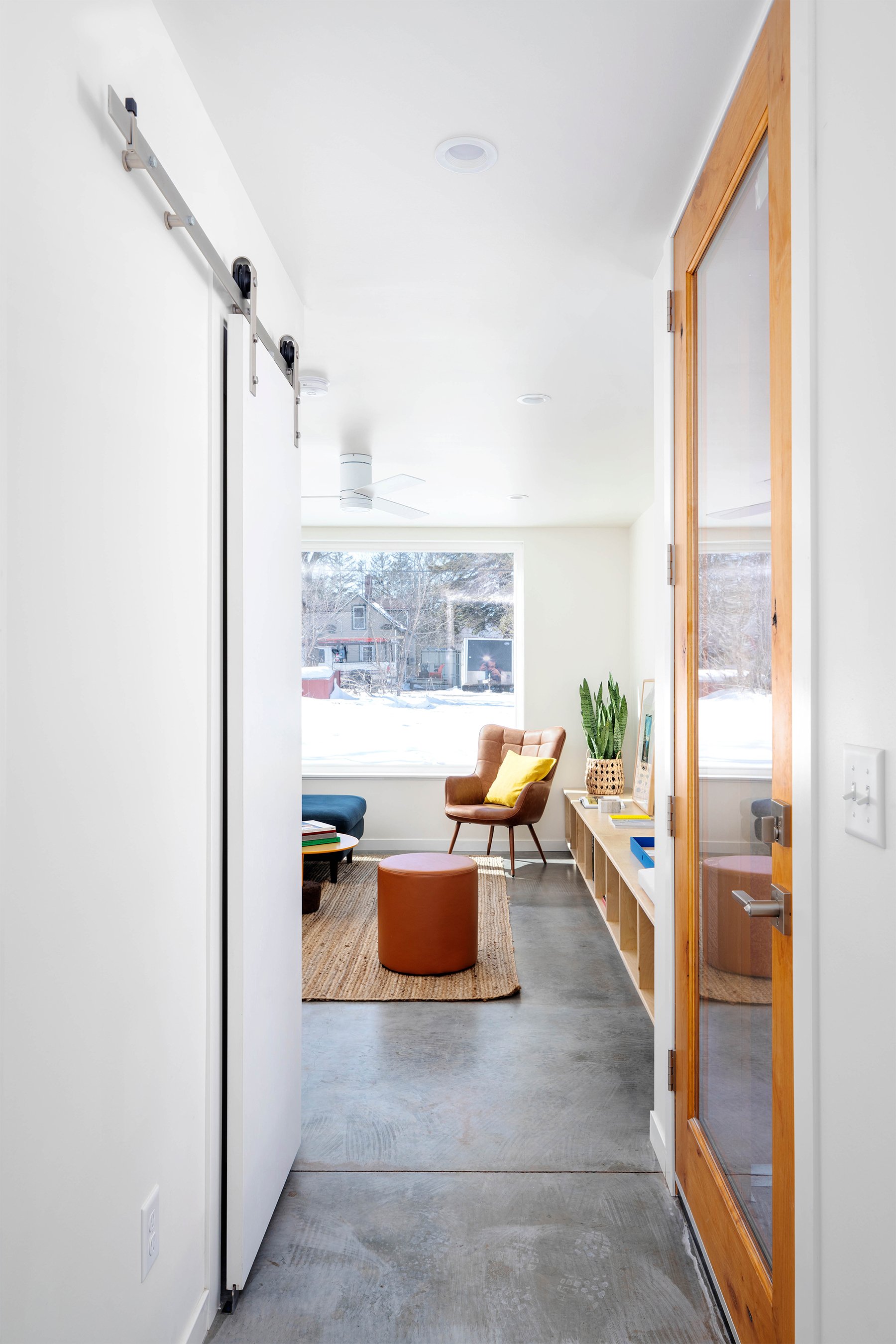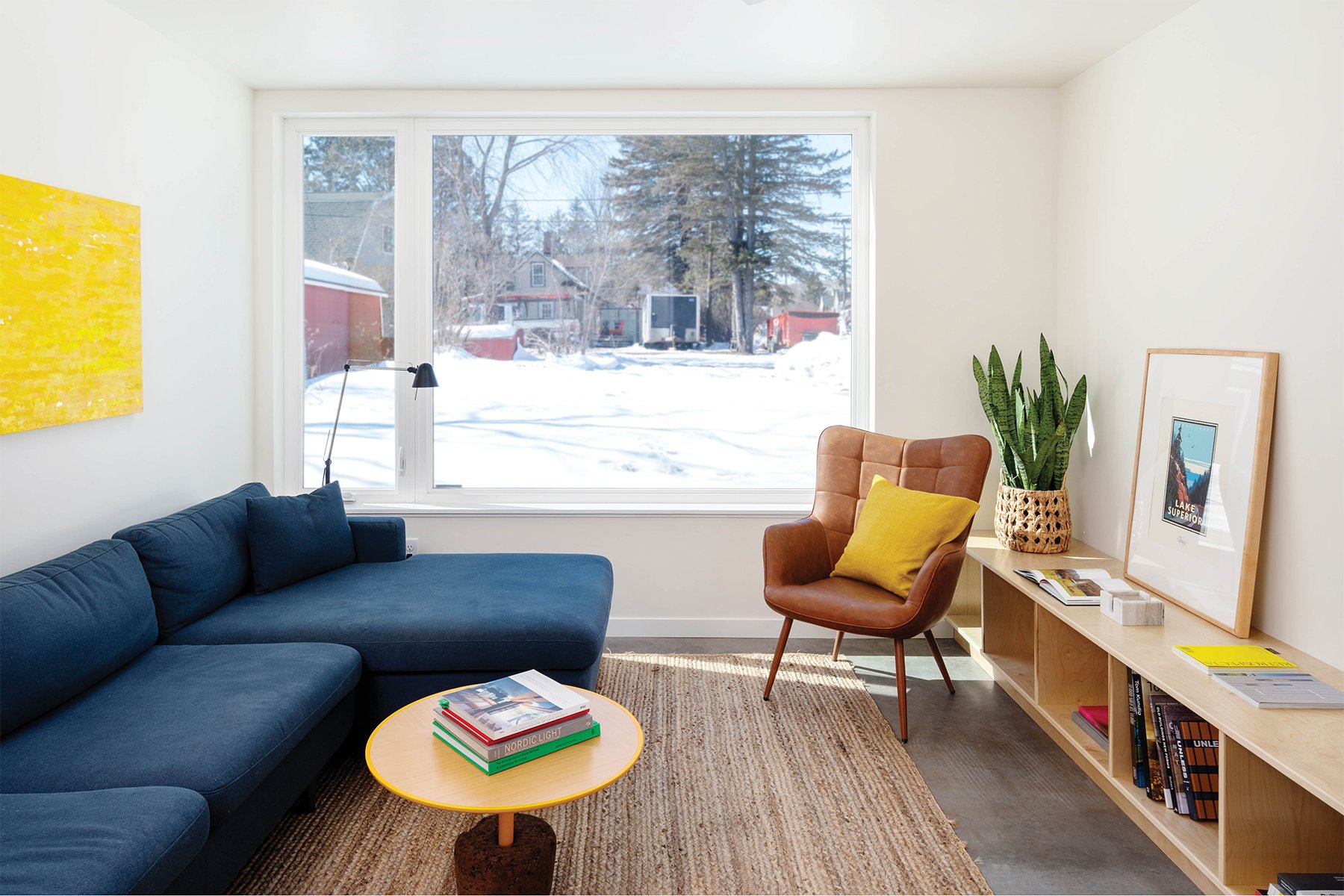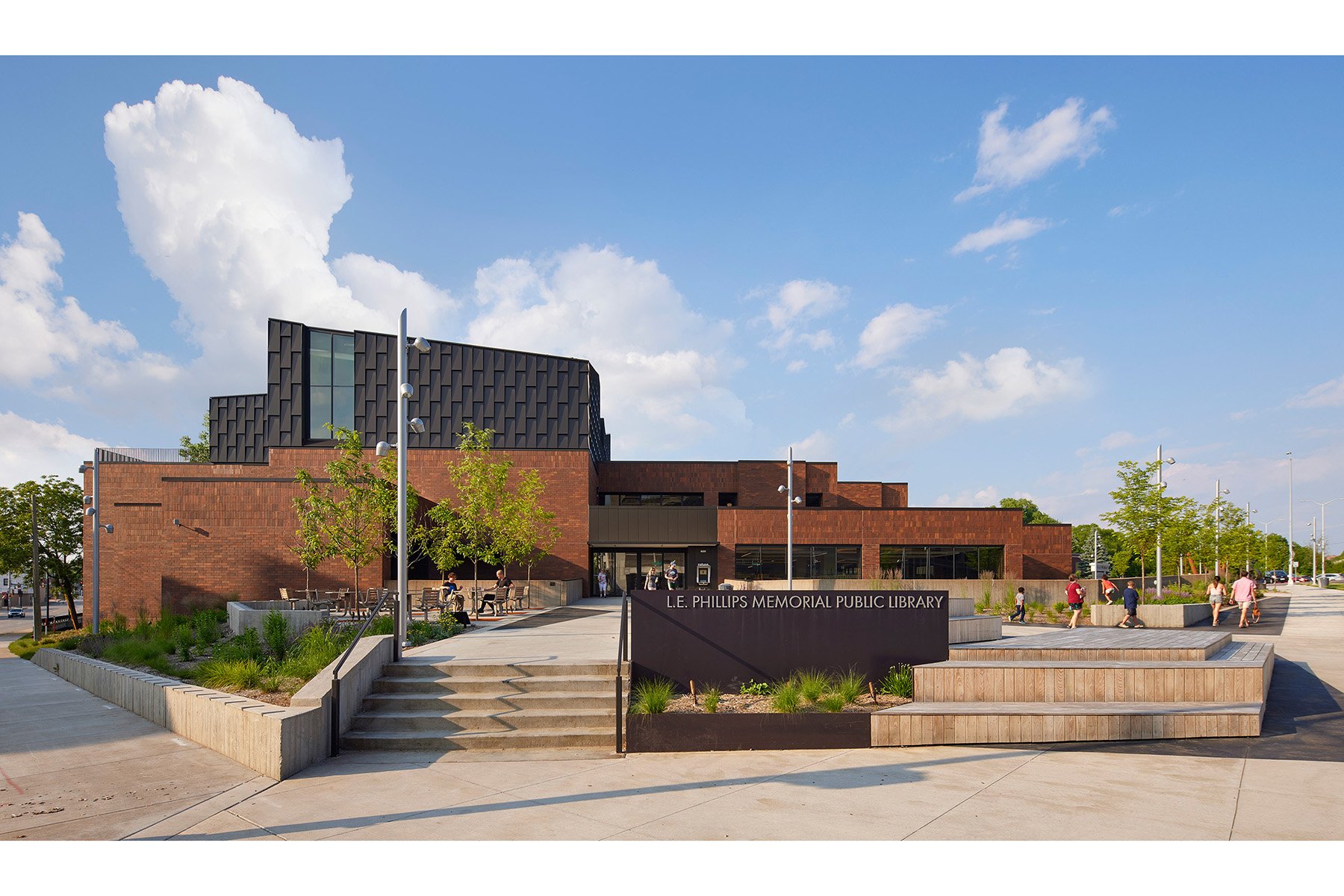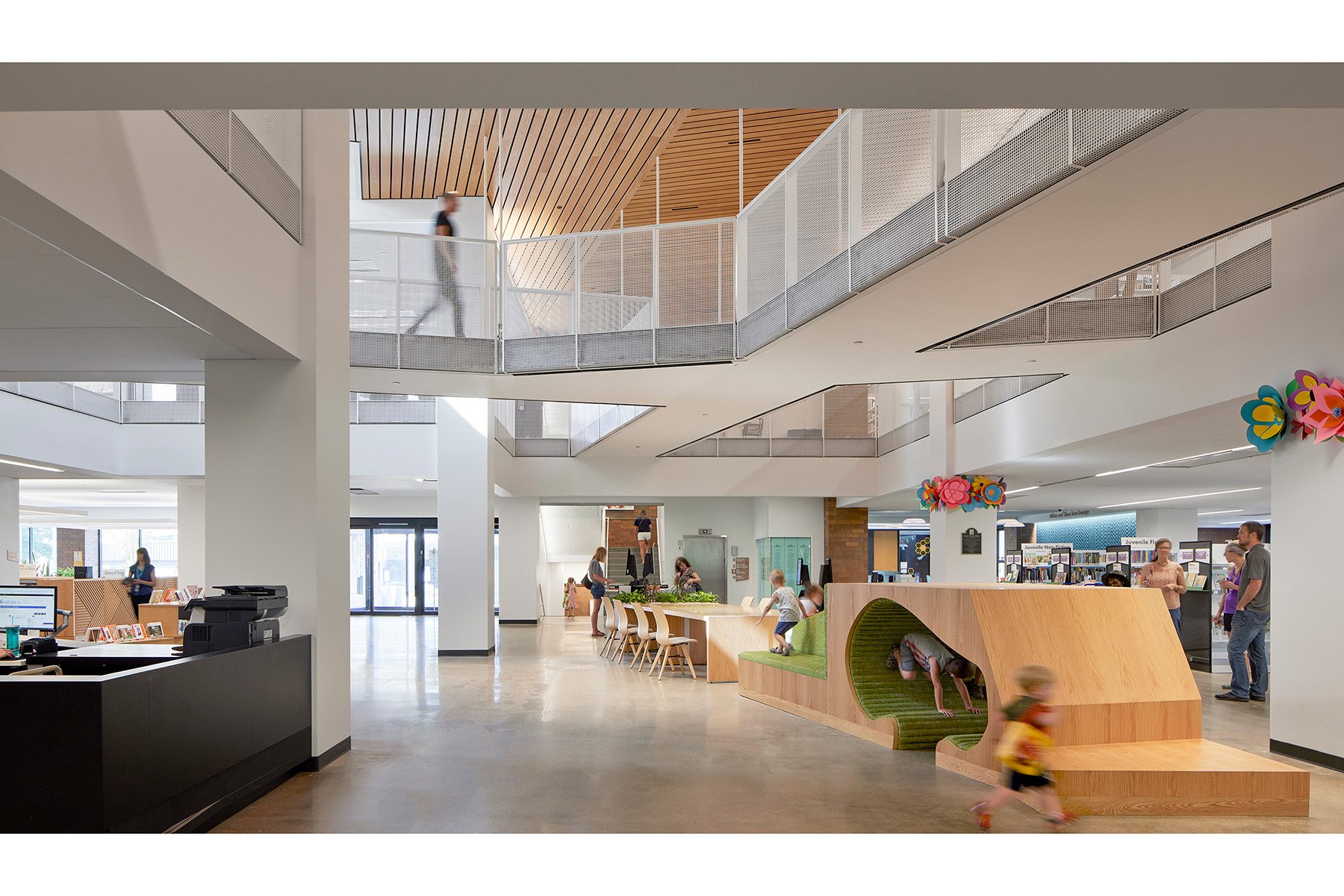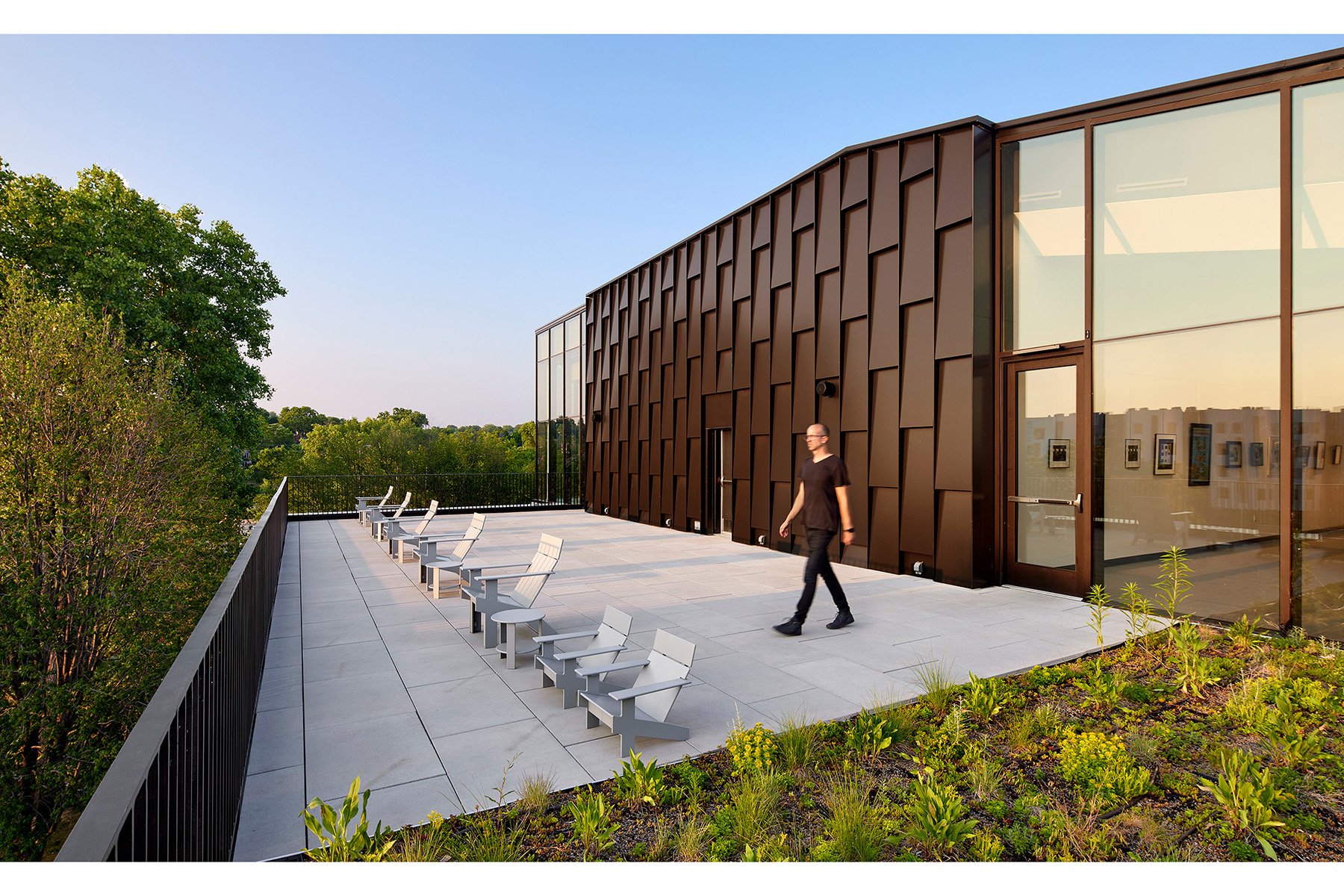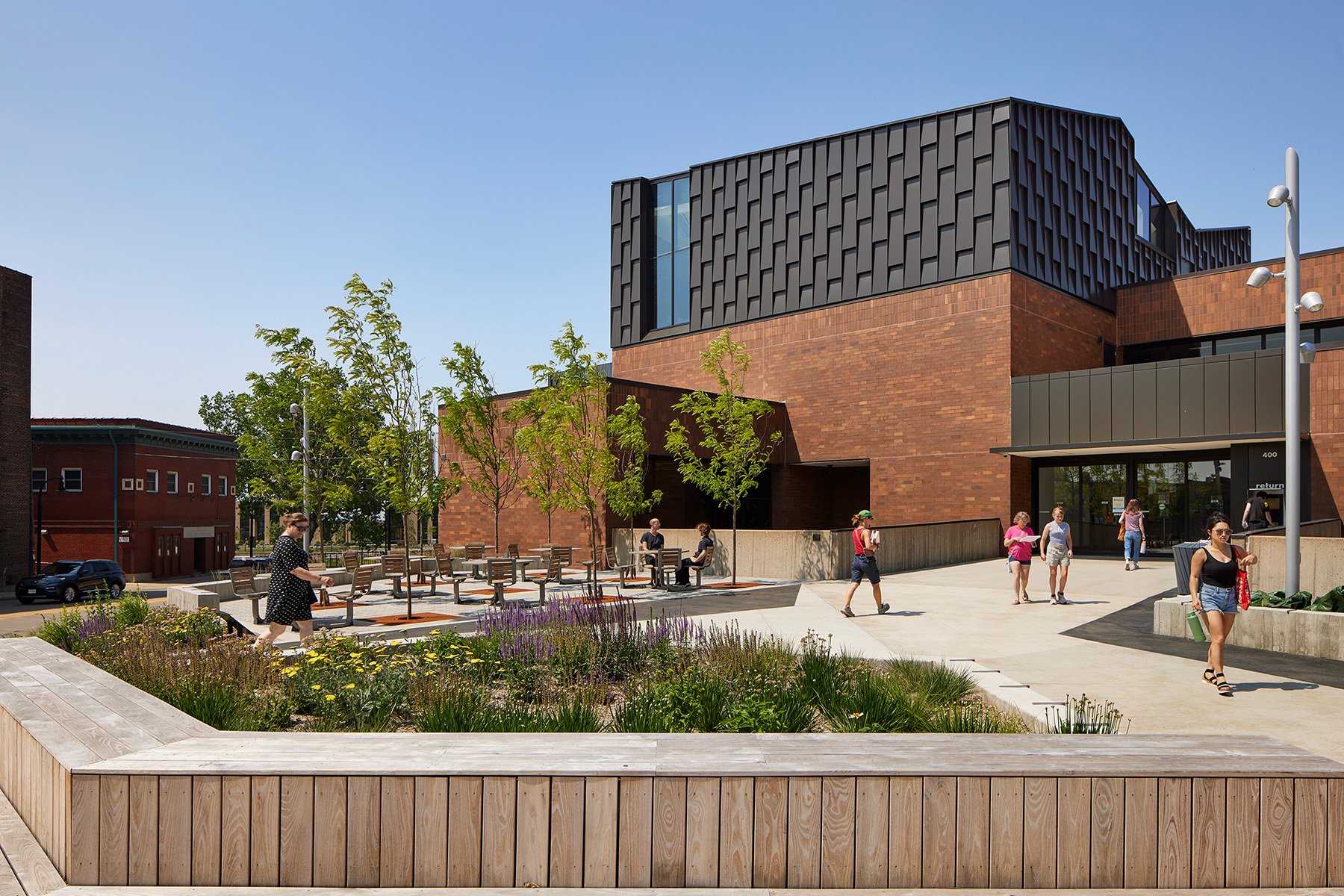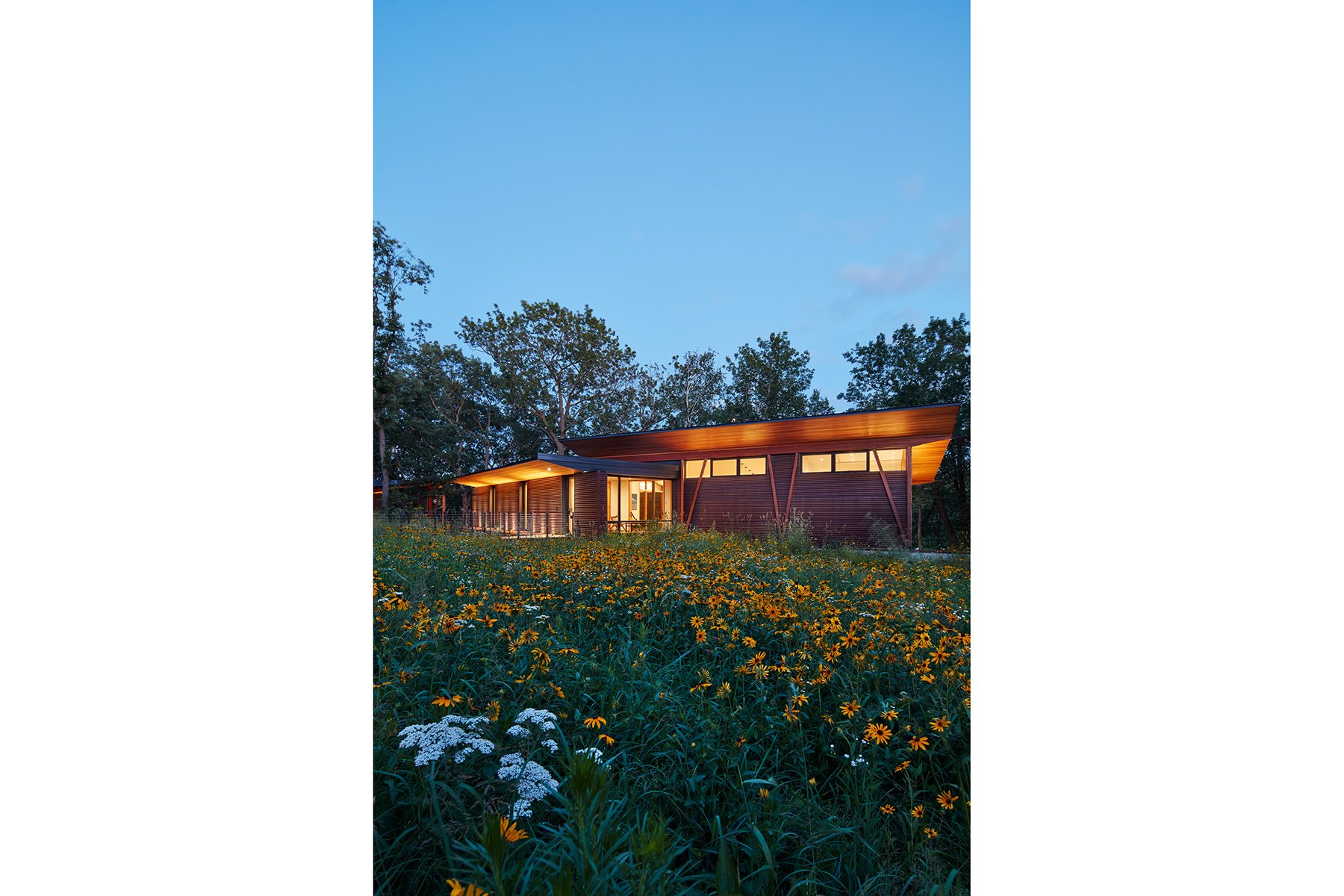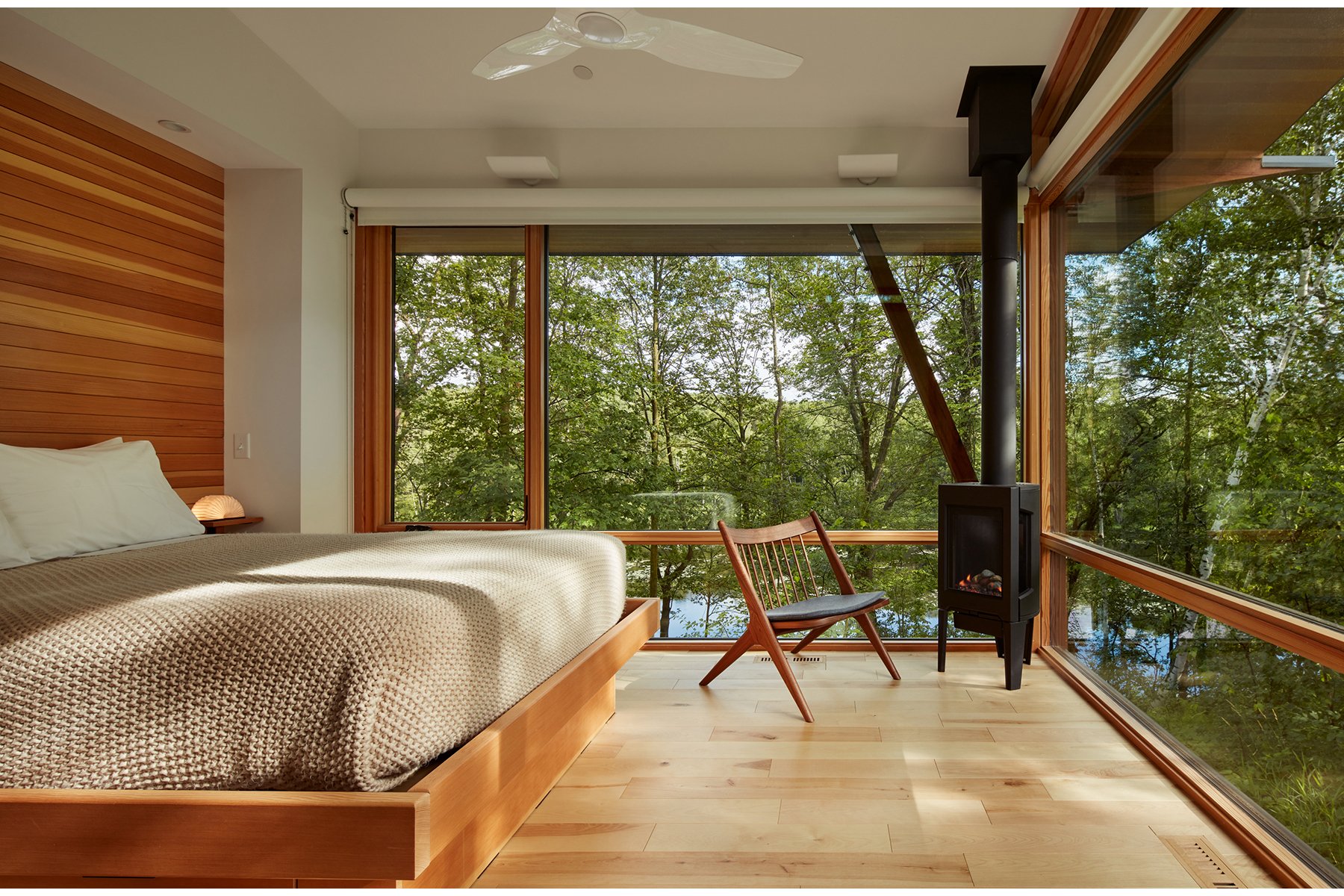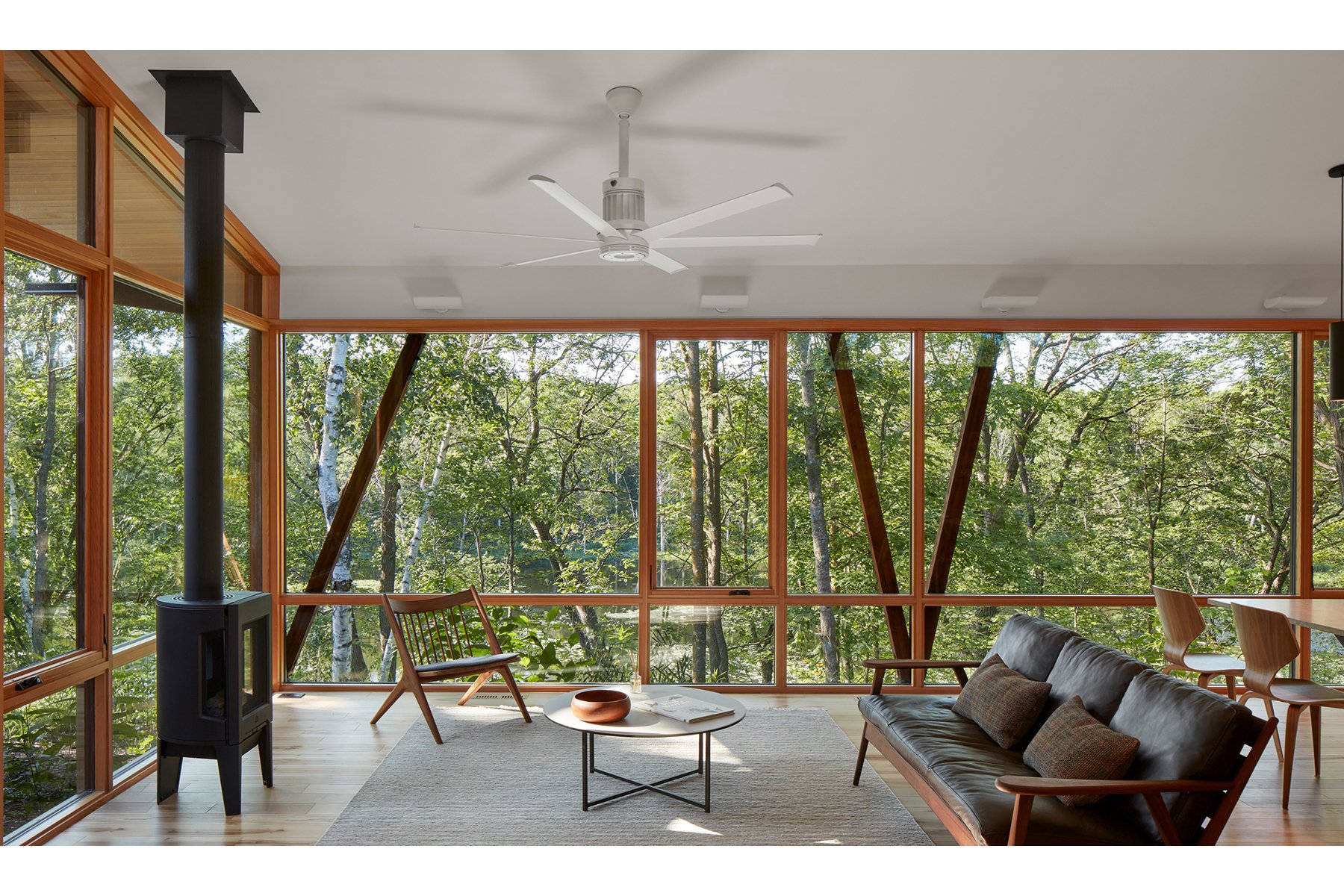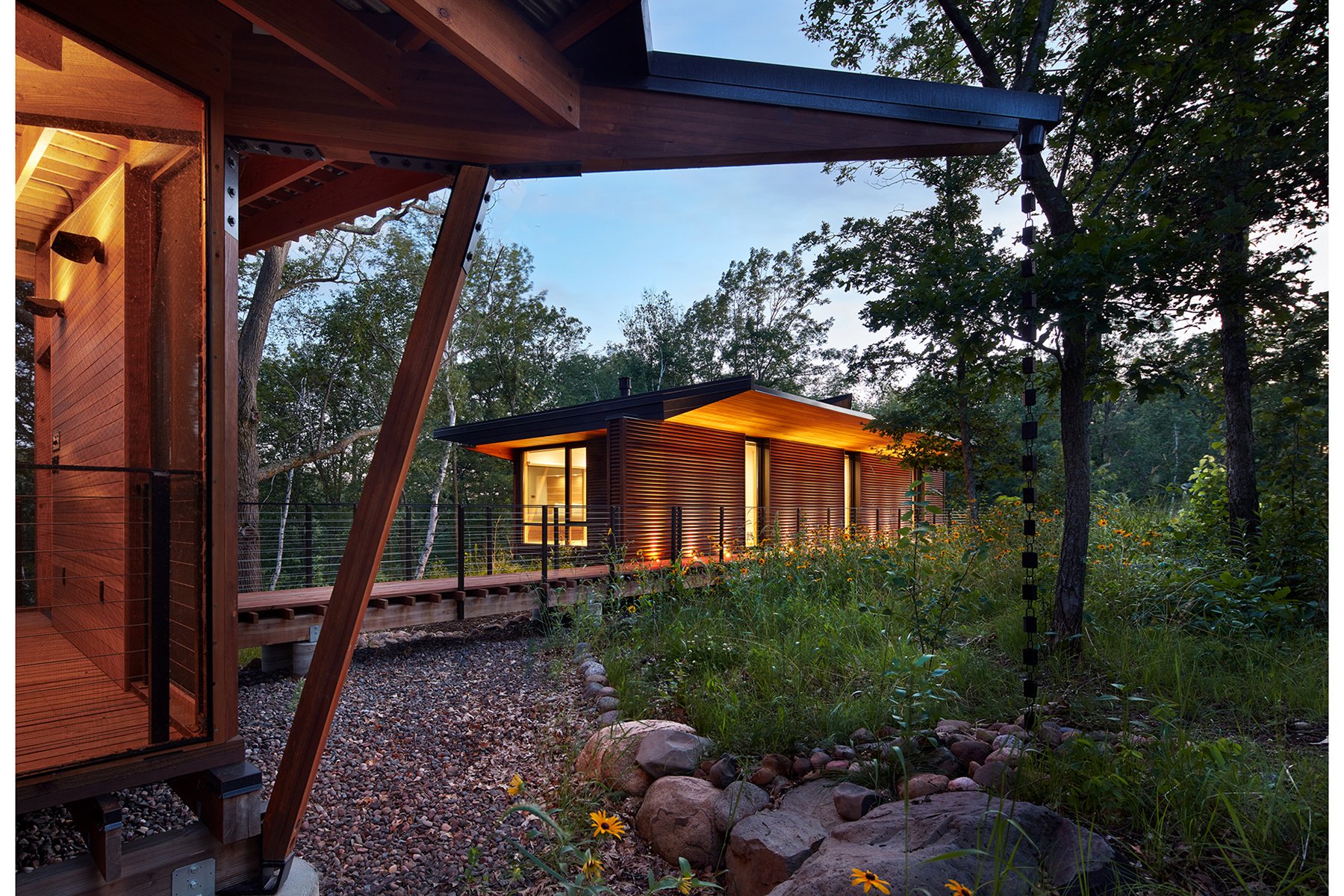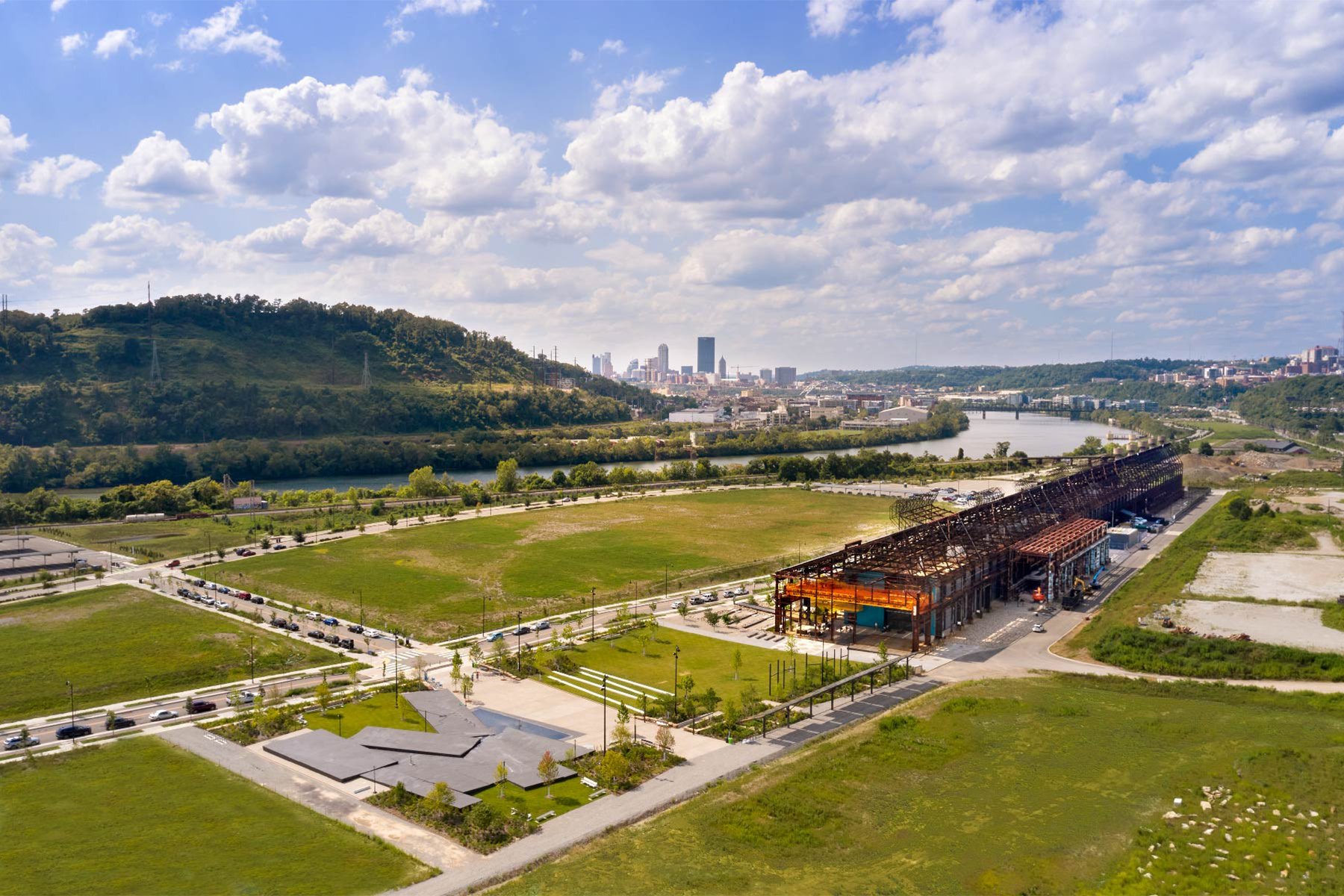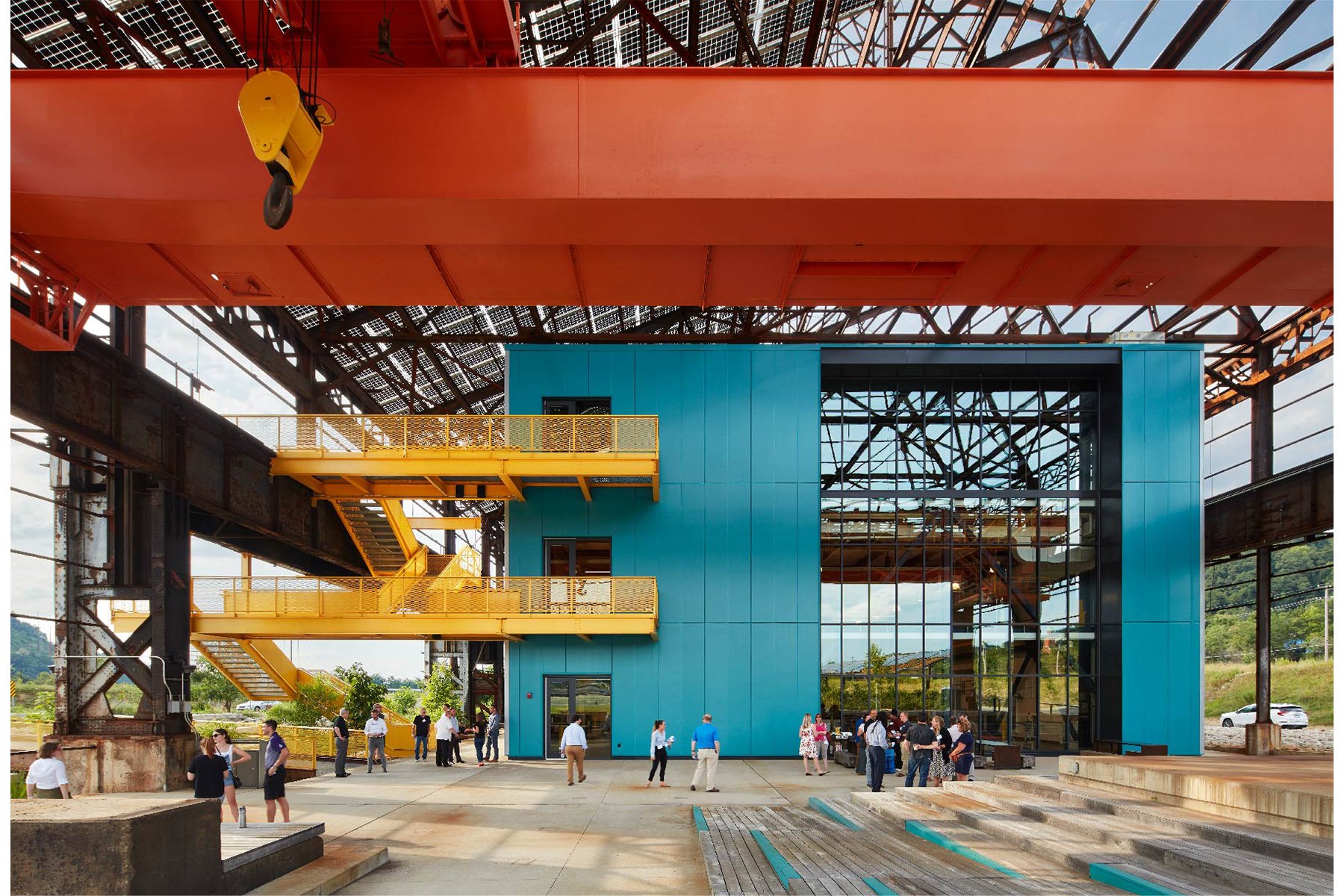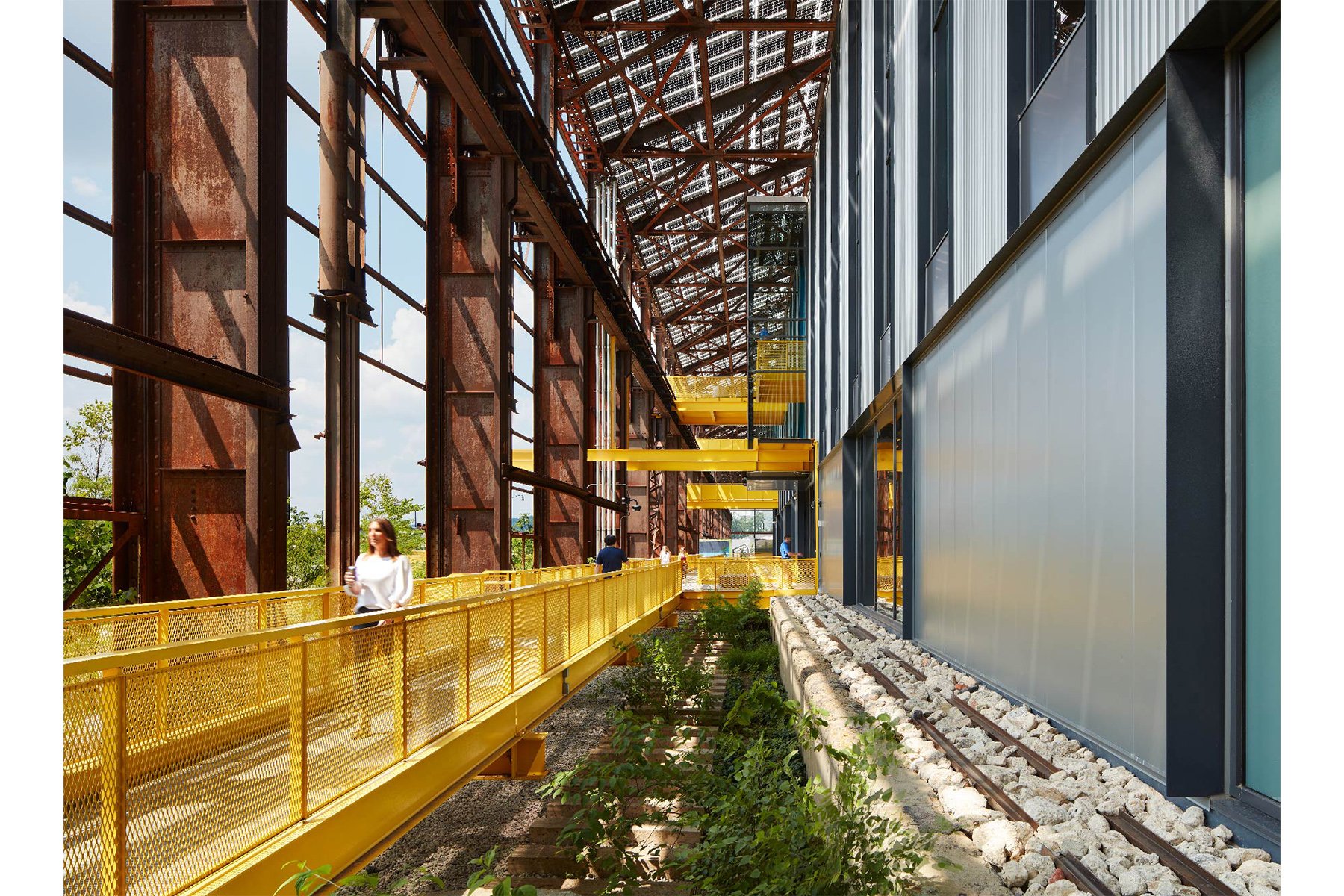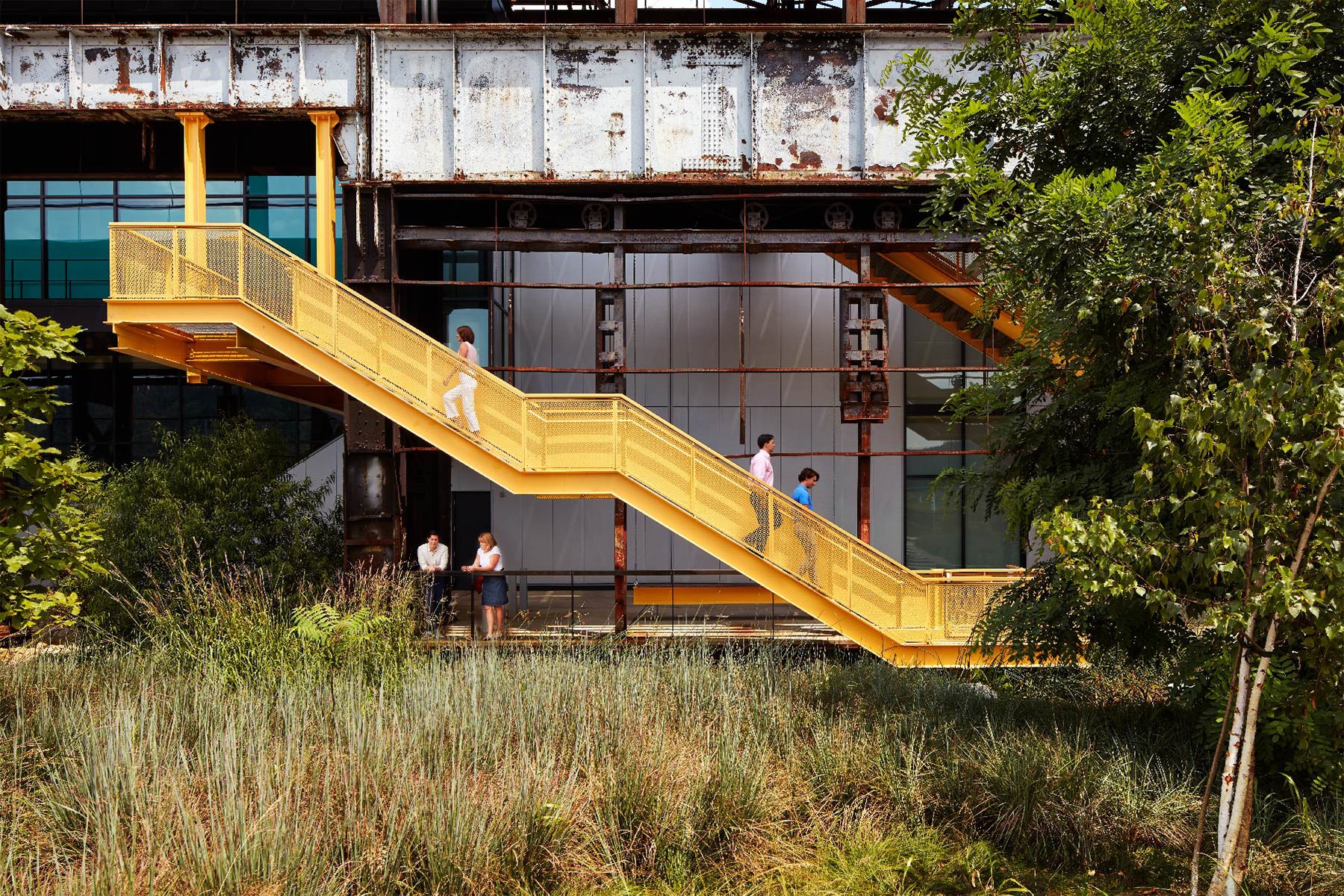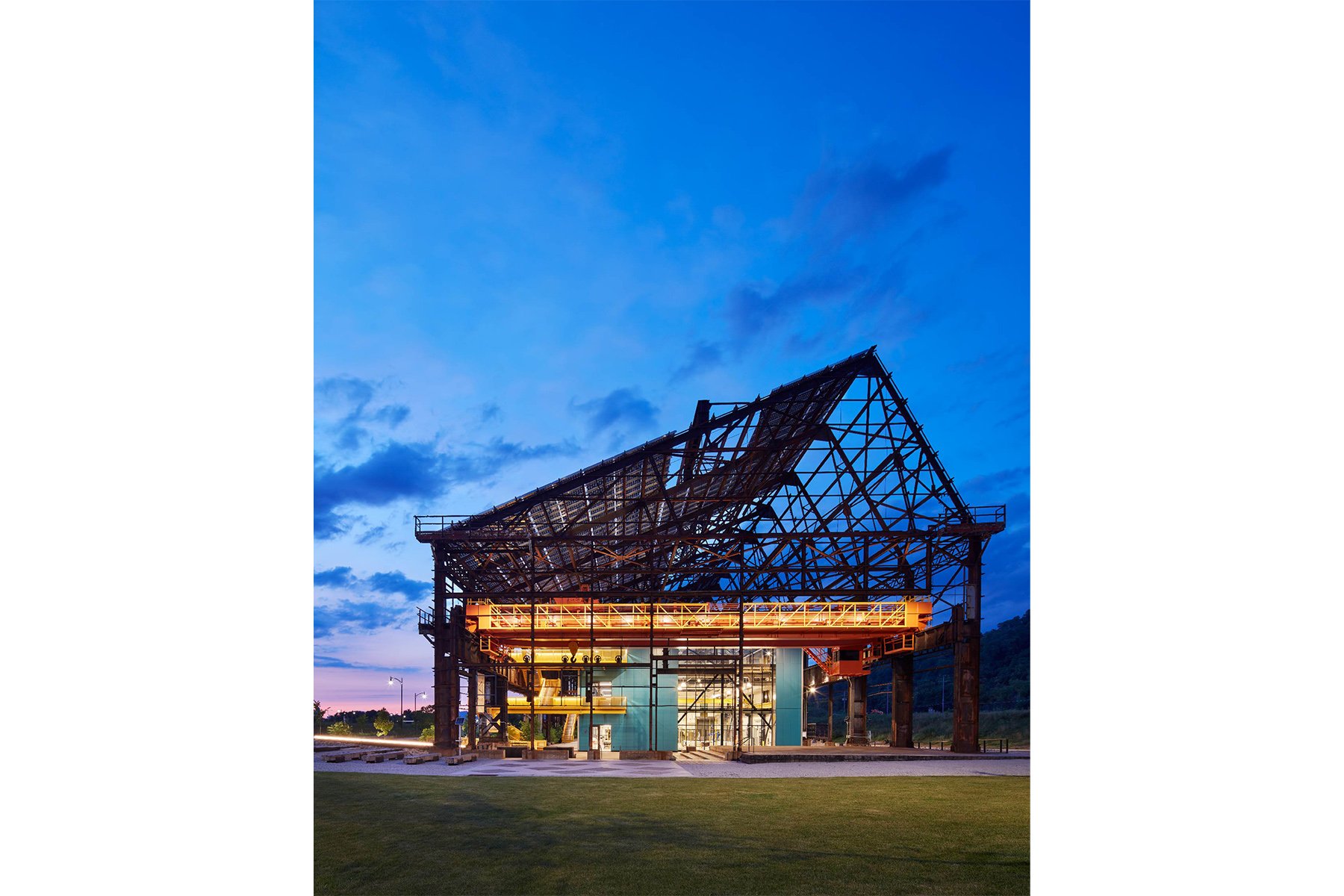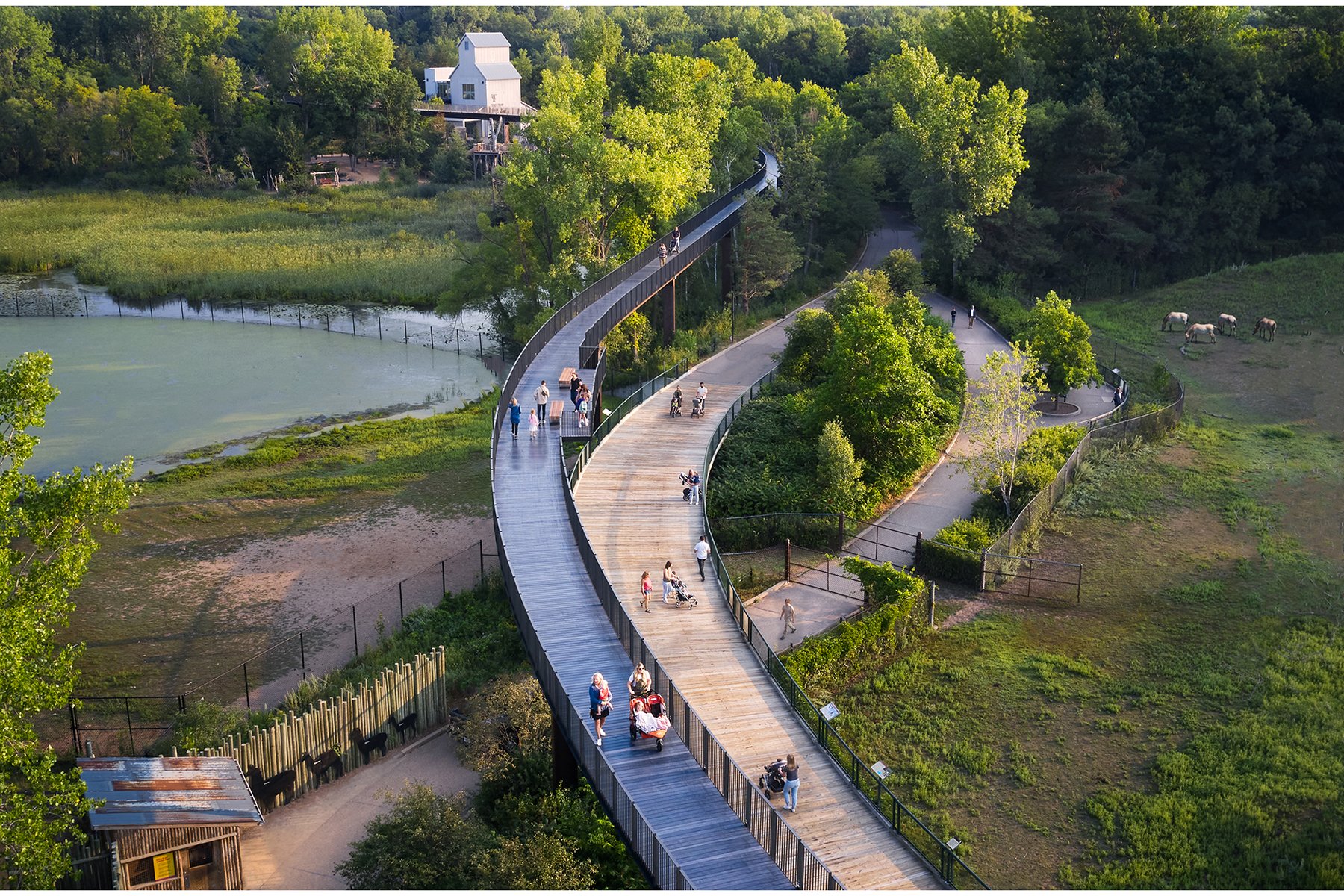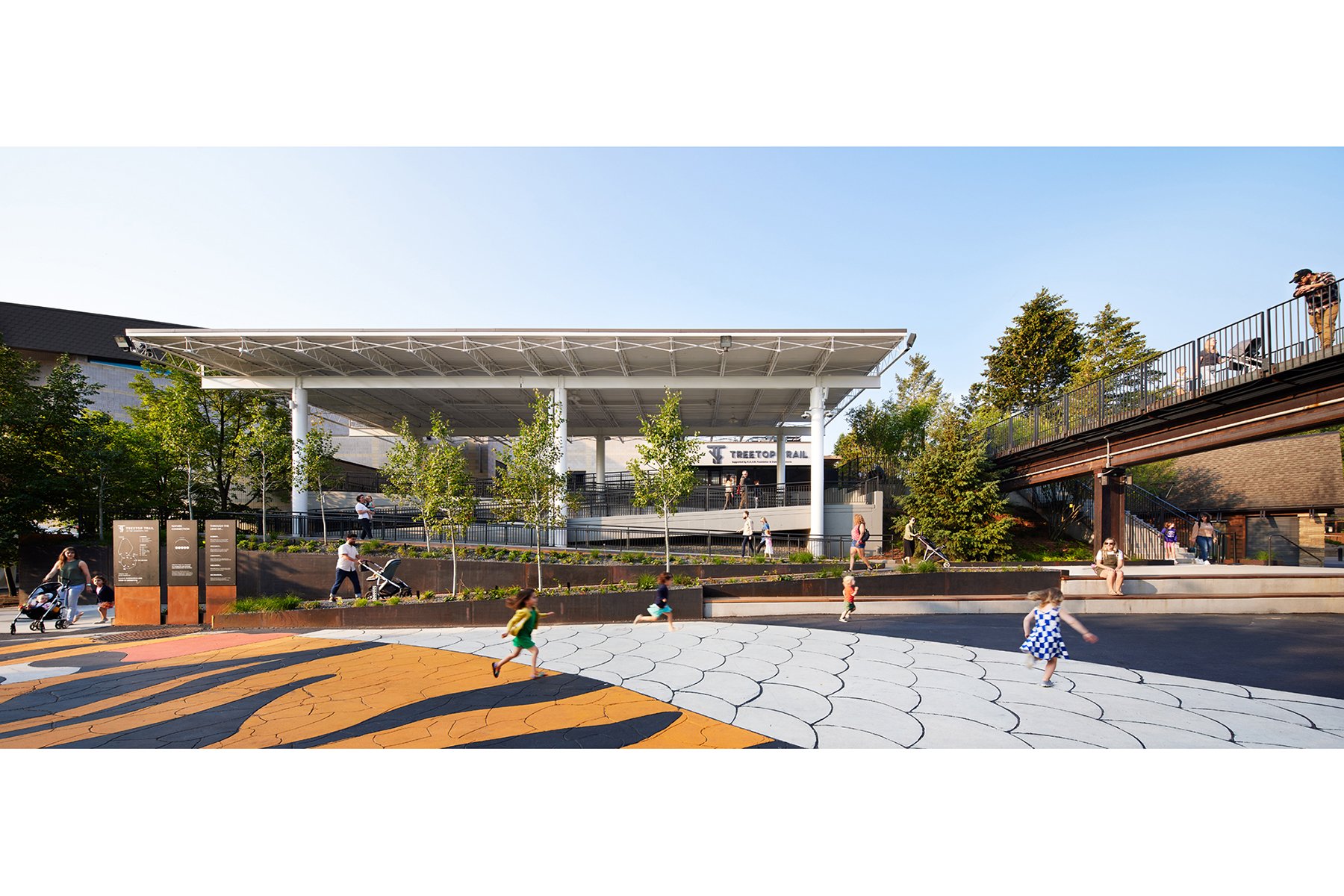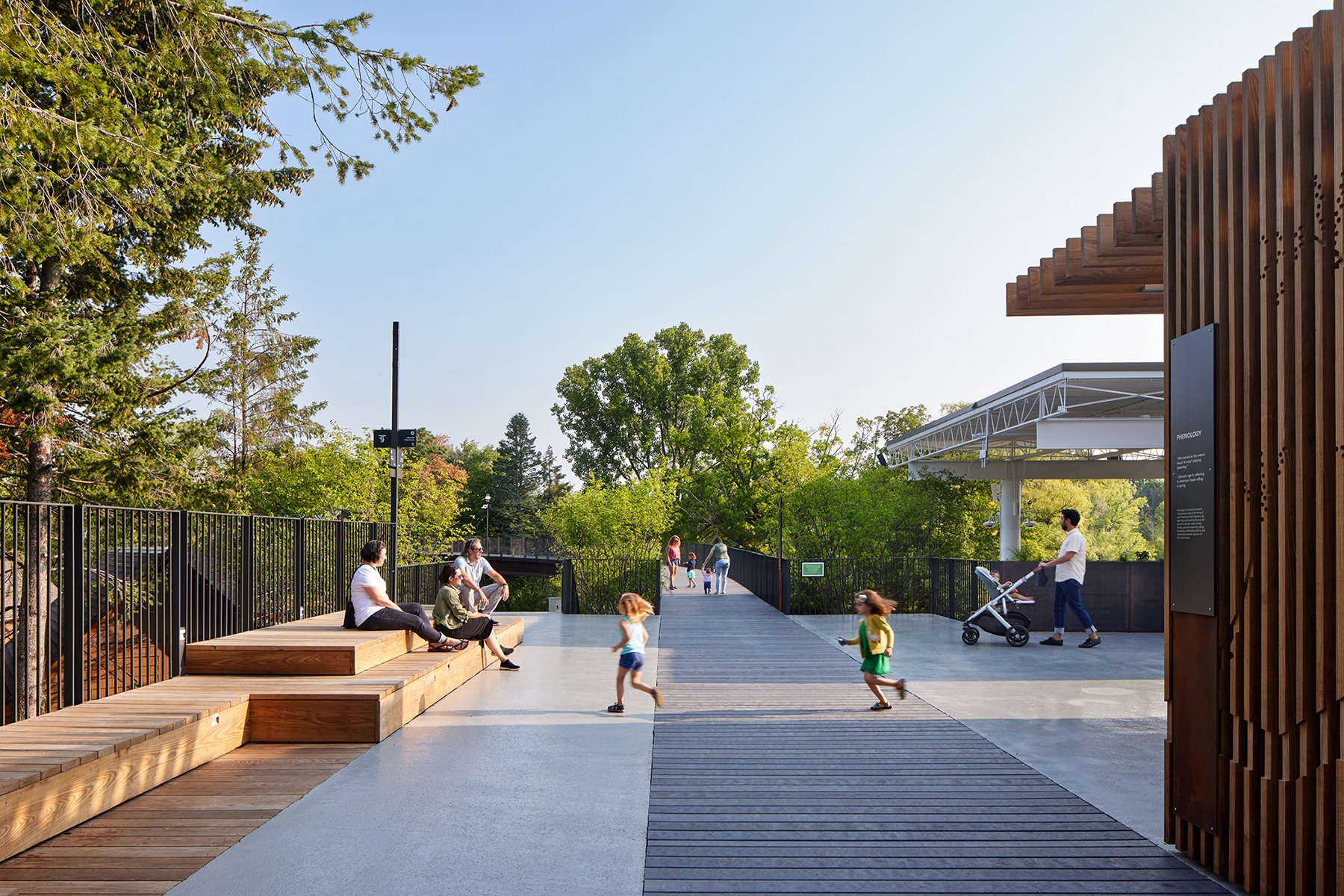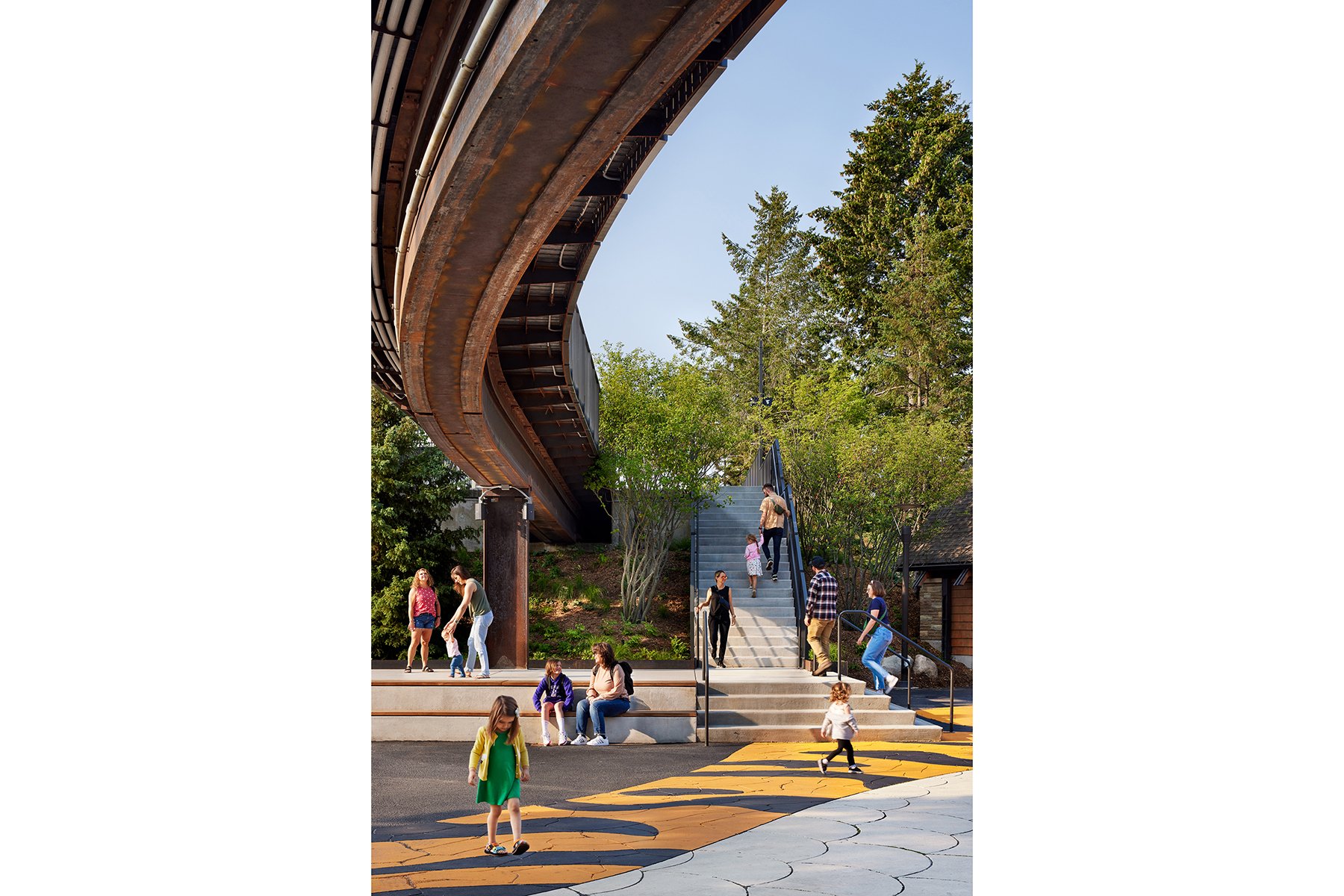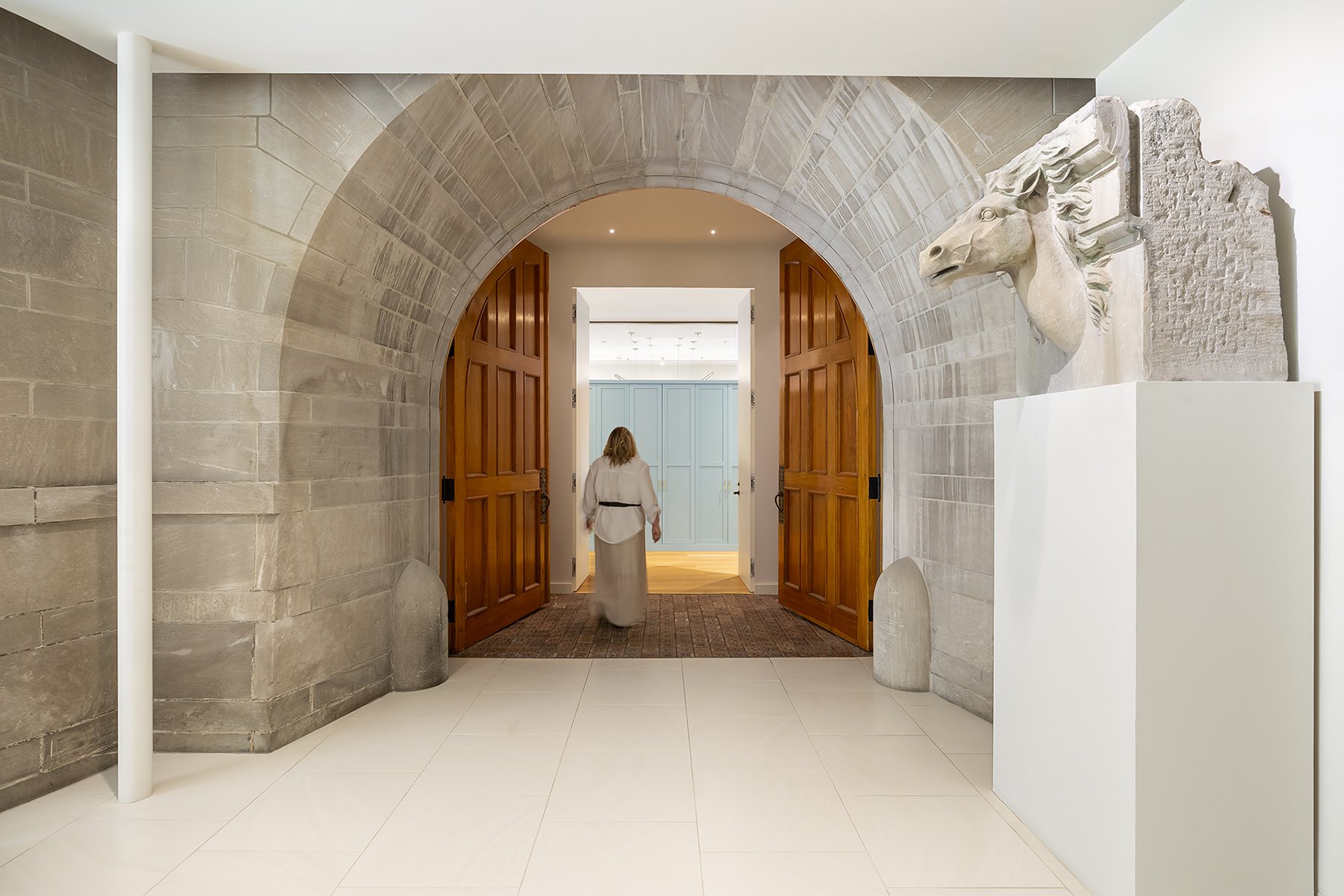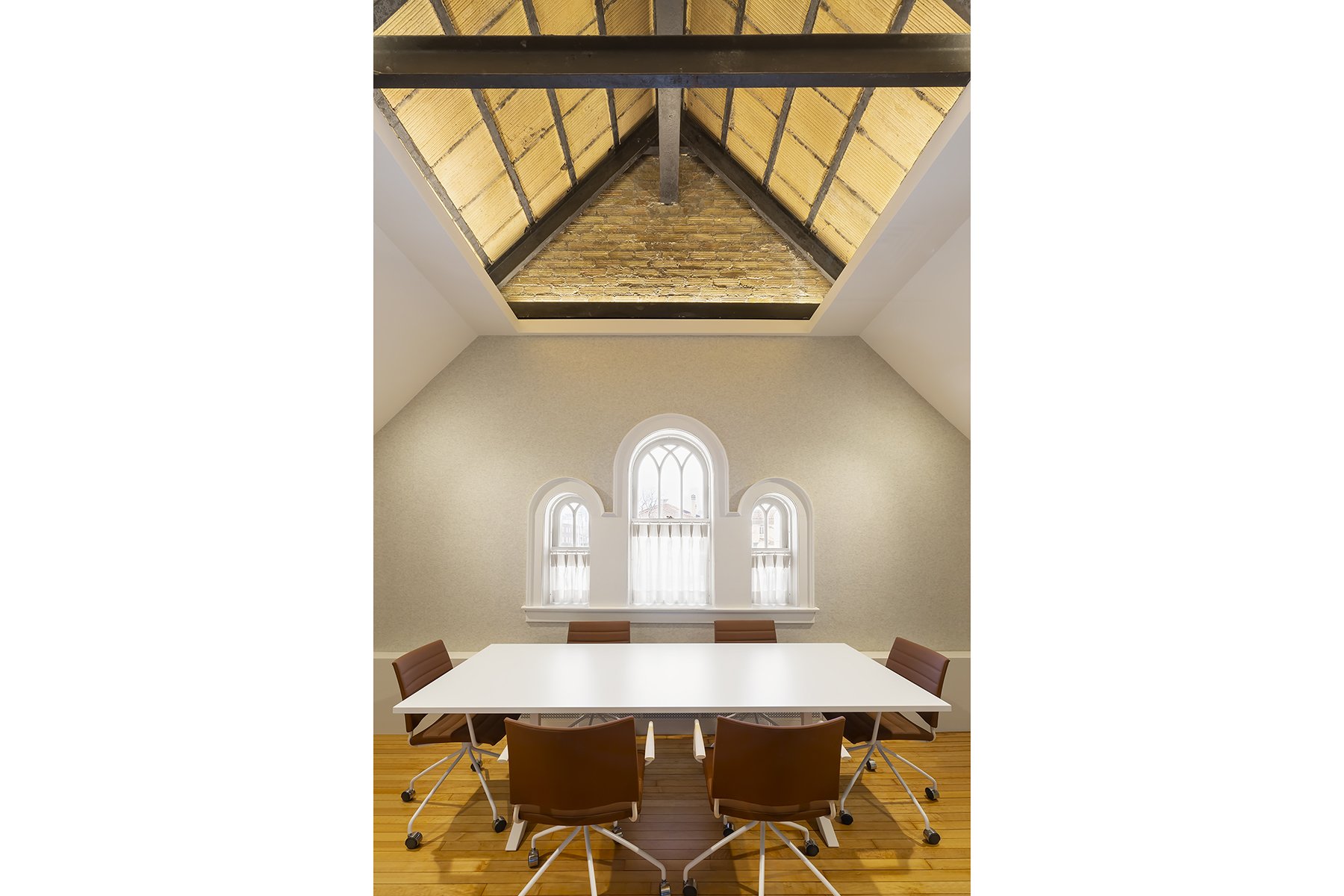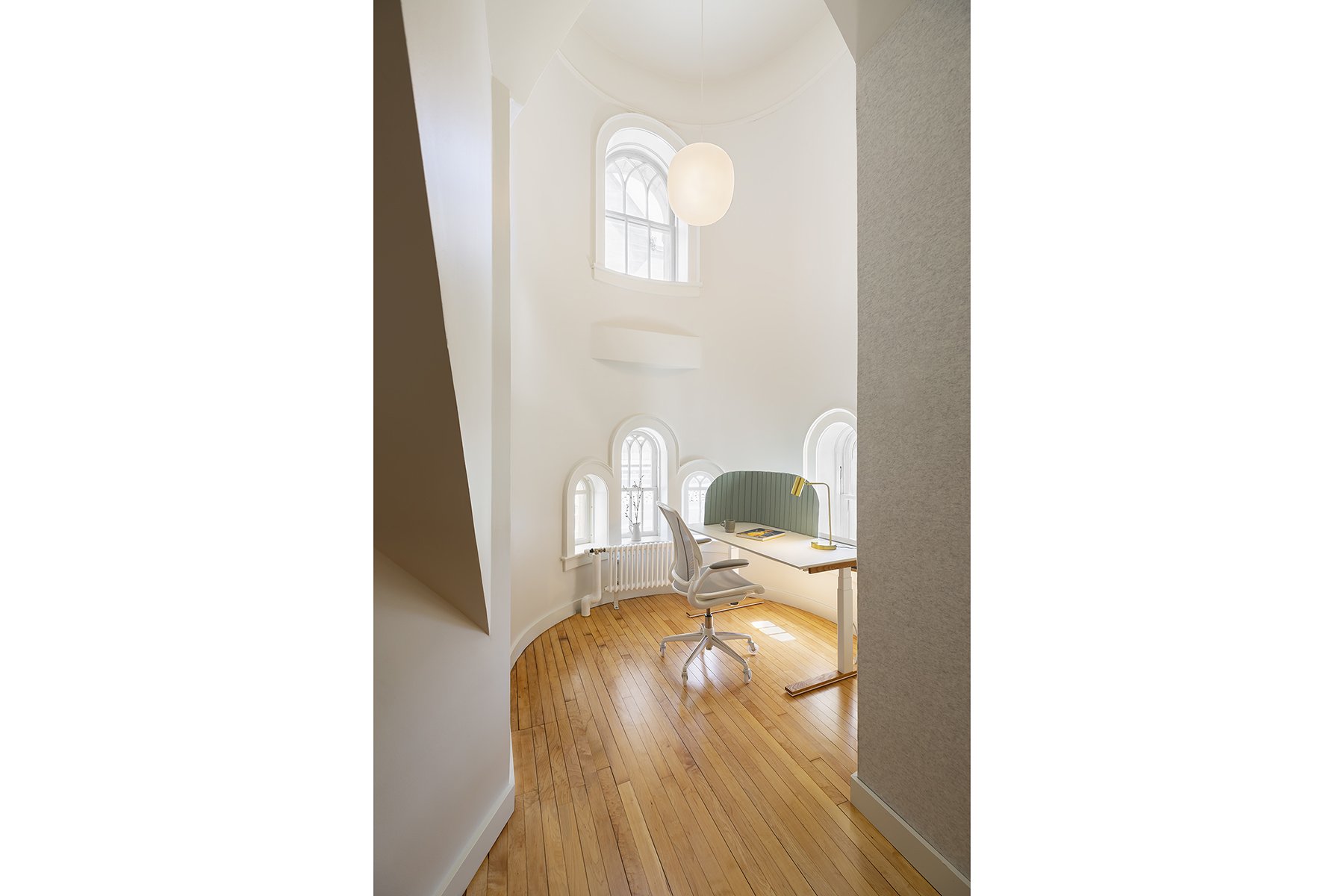The Seven Recipients of 2023 AIA Minnesota Honor Awards and Commendations for Design Excellence
By Chris Hudson | November 16, 2023
RIDC Mill 19 in Pittsburgh, Pennsylvania, designed by MSR Design. Photo by Gaffer Photography.
SPOTLIGHT
At an awards celebration on November 15, AIA Minnesota announced the winners of its annual Honor Awards and Commendations for Design Excellence, the state’s most prestigious recognition for buildings designed by Minnesota architects. The 40 submissions were reviewed by a panel of three acclaimed architects from around the country and evaluated using the AIA Framework for Design Excellence. The Framework outlines a holistic approach to quality design in 10 measures: Design for Integration, Equitable Communities, Ecology, Water, Economy, Energy, Well-being, Resources, Change, and Discovery.
The 2023 jury selected two projects for an Honor Award, for demonstrating excellence in two or more Framework measures, and five additional entries for a Commendation for Design Excellence, for a notable achievement in a single Framework measure.
This year’s judges were Natasha Espada, AIA, NOMA, of Studio Enée in Needham, Massachusetts; Adrianna Swindle, AIA, of Lake|Flato in San Antonio, Texas; and JoAnn Hindmarsh Wilcox, AIA, of Mithun in Seattle, Washington.
“I was blown away by the number and quality of the renovation, modernization, and expansion projects,” said Wilcox. “That’s important work that goes right to the core of the Framework for Design Excellence.”
Additional comments from the jury are included in the project highlights below.
Photos by Gaffer Photography.
Cottage Grove Ravine Landing
Cottage Grove, Minnesota
Architect: HGA
Client: Washington County, Minnesota
Commendation for Excellence in Design for Resources
This new trailhead building for a regional park makes a strong impression with its mass-timber elements—Alaskan Yellow Cedar glulam columns and beams and a spruce cross-laminated-timber roof deck. The 6,000-square-foot activities hub includes a central lobby with a fireplace, park offices, a rentable multipurpose space with a kitchenette, gender-inclusive restrooms, a porch, and a covered picnic area.
Jury comment: “I love this project. It’s a civic jewel box that’s thoughtfully integrated into its site, designed to be a place of education and connection for a much larger natural environment. In addition to their construction and sustainability benefits, the mass-timber pieces lend warmth and resonance with the surroundings throughout the seasons.”
Photos by Dan Jandl.
Infill House
Duluth, Minnesota
Architect: Office Hughes Olsen
Client: One Roof Community Housing
Commendation for Excellence in Design for Economy
This project got its start in a design competition that challenged entrants to identify ways to utilize narrow lots in Duluth made newly developable by a zoning change. The entry included a two-level home with a “barbell” plan in which full-width rooms occupy each end of the house and services are concentrated in the center. Later built by a nonprofit housing developer, the home has a minimalist form and exterior with the primary entrance encased in warm Richlite siding.
Jury comment: “This is a project with a strong mission. I was equally impressed by its thoughtful solution to housing for vacant narrow lots and by the spirit of partnership that was forged among the players to bring this prototype to life. That creativity, collaboration, and perseverance has yielded beautiful, simple results that can benefit the community.”
Photos by Gaffer Photography.
L.E. Phillips Memorial Public Library
Eau Claire, Wisconsin
Architect: MSR Design
Client: L.E. Phillips Memorial Public Library/City of Eau Claire
Honor Award for Excellence in Design for Equitable Communities, Economy, Resources, Integration, Change, and Well-being
This three-story 1970s library in downtown Eau Claire, Wisconsin, had a tight column grid, low floor-to-floor heights, few windows, and limited room for growth. The renovation opened the building up with windows that showcase interior activities and skylights that bring daylight deep inside. A 6,700-square-foot roof-level addition features large spaces for community events and a terrace with expansive views. The project also converted a street in front of the library into a public plaza for improved accessibility and gatherings.
Jury comment: “The modernizing of this building was an exercise in craft and restraint. The architects used the relatively small addition to create a more proportioned, beautifully detailed exterior and sculpt light in the interiors. The welcoming indoor and outdoor spaces for learning, reading, cooking, making, and exploring are in daily conversation about what a library can be for a community.”
Photos by Gaffer Photography.
LongHouse
Frederic, Wisconsin
Architect: SALA Architects
Clients: Bruce and Annie McPheeters
Commendation for Excellence in Design for Well-being
Set on a bluff edge above a small lake, LongHouse is the second of three cabins on 140 acres of rolling woodlands and prairie for a multi-generational family who share their retreats as Airbnb-style rentals. With its weathered steel siding, glulam columns and beams, engineered wood rafters and joists, and Douglas fir soffits, the two-bedroom cabin nestles quietly into its setting. Expansive interior views and a satellite porch reached via a covered boardwalk immerse guests in nature.
Jury comment: “This cabin is all about experiencing nature inside and out. The proportions of the home, the way the architecture meanders through the site, and the detailing throughout make the cabin feel modest and special at the same time. The landscape and the architecture are so thoughtfully woven together that the architecture seems to be secondary.”
Photos by Gaffer Photography.
RIDC Mill 19
Pittsburgh, Pennsylvania
Architect: MSR Design
Client: Regional Industrial Development Corporation
Honor Award for Excellence in Design for Energy, Economy, Water, Change, Discovery, Integration, Well-being, and Ecosystems
This striking adaptive reuse anchors the redevelopment of a 170-acre brownfield site into a mixed-use innovation district. The project repurposed the steel skeleton of an abandoned steel rolling mill as an outer shell for new high-tech office, lab, and manufacturing facilities. Tenants and visitors navigate this atmospheric mix of new and old via a network of new plazas, elevated walkways, balconies, and gardens. The mill’s roof supports the largest single-sloped glass solar array in the U.S.
Earlier this year, RIDC Mill 19 won an AIA COTE Top Ten Award, the most prestigious honor in the country for sustainable design excellence.
Jury comment: “The architects did an amazing job thinking about sustainability and human experience in leveraging the assets that were there. This project makes a powerful statement about reuse. It says, ‘We don’t have to take it all for what it is. We don’t have to take it all apart. But we get to use that carbon. We get to think about the frame differently when we think about reuse.’”
Photos by Gaffer Photography.
Treetop Trail at the Minnesota Zoo
Apple Valley, Minnesota
Architect: Snow Kreilich Architects
Client: Minnesota Zoo
Commendation for Excellence in Design for Integration
This project is a 1.25-mile, elevated pedestrian walkway that winds around the zoo’s Northern Trail section, taking visitors on a circuitous journey through the property’s varied landscapes, vistas, and canopies. The path is complemented by pergolas, wood benches, accessible on/off-ramps, and strategically sited lookouts. Returning guests will recognize the structure: The trail is an adaptive reuse of Skytrail, the zoo’s monorail system, which was decommissioned in 2013.
Jury comment: “Another great reuse project. The design team used the old monorail structure to sculpt a sequence of immersive experiences across this enormous site. One moment you’re nestled in the tree canopy, the next you’re with community and there’s music. It’s one of those magical places where the role of architecture in bringing community together becomes quite clear.”
Photos by Andrea Rugg Photography.
Turnblad Mansion Rehabilitation and Carriage House Renovation
Minneapolis, Minnesota
Architect: HGA
Client: American Swedish Institute
Commendation for Excellence in Design for Change
For the exterior rehabilitation of the 1903 mansion, woodworkers, masons, and stone carvers repaired damage and recreated missing elements. In the carriage house, a painstaking salvage process yielded unexpected discoveries, illuminating the history of the property. The three-level renovation installed warm, collaboration-friendly work and gathering spaces that reveal and celebrate that history. The color of the custom millwork was inspired by patinated copper details on the exterior.
Jury comment: “The ‘before’ and ‘after’ images tell quite a story. The carriage house was a rabbit warren of dark spaces before it was given new life. The architects peeled back the interiors, then created a really clean foil, leaving some of the underlying elements exposed. I find this project to be a masterwork of craft and detailing.”


